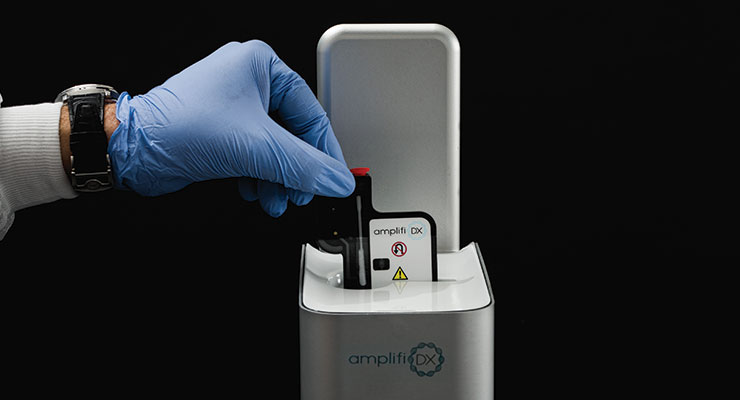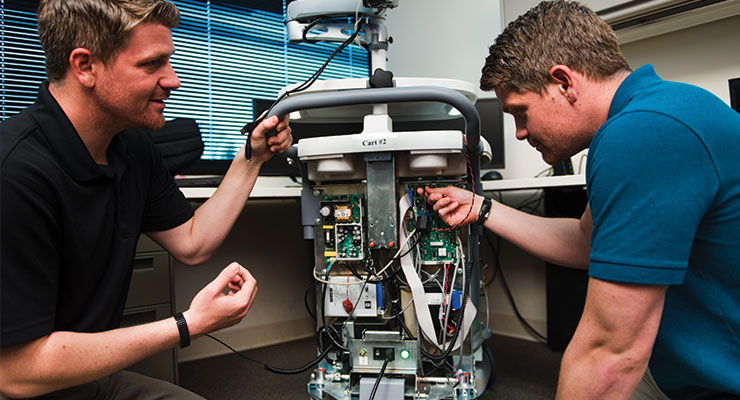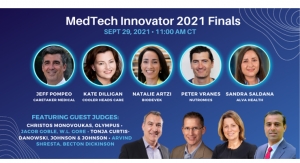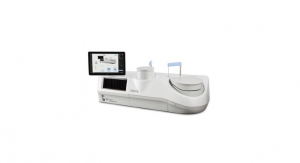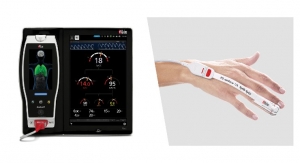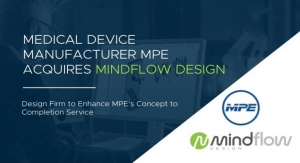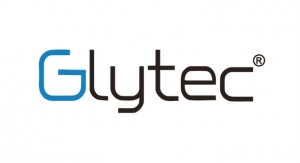Mark Crawford, Contributing Writer05.03.21
Product development in the medical device industry is booming. Devices are becoming smaller and smarter, especially for the expanding number of less-invasive procedures being developed. Making diagnostic instruments and devices that battle COVID-19 are still a top priority. Greater design attention is being focused on meeting FDA and other regulatory standards. New devices are often Internet of Things-driven, with sensors and data capabilities, that are then further shaped through human-factors engineering.
“Integrating digital insights into devices is becoming increasingly important,” said Kevin Ehlert, segment manager for Trelleborg Healthcare & Medical, a Schaumburg, Ill.-based provider of innovative engineered solutions for medical device, biotech, and pharmaceutical applications. “Through a more data-driven approach, care providers can access real-time information and cater treatment to the patient in a much more focused and effective way.”
“The democratization of healthcare is pushing the industry to create more automation and home-use devices,” added Dan Sterling, president of Sterling Medical Devices, a Moonachie, N.J.-based provider of product design and engineering services to the medical device industry. “Specifically, robotics addresses the need to treat more people, while allowing surgeons to work more efficiently.”
Medical device manufacturers (MDMs) want to create products that improve the physician or patient experience through intuitive designs. This means adding, refining, or optimizing features that makes the products work more smoothly and easily for the end user. MDMs are asking for better products and some healthcare providers are even requiring that new devices provide enough improvement to make the switch from current products, noted Victoria Trafka, president and principal engineer for Engineering & Quality Solutions, a Colorado Springs, Colo.-based contract engineering and development company focused on orthopedic trauma and spine implants and surgical instruments. “For example, for a hospital to make a change to a new spinal interbody fusion device, the new device needs to have documented improved patient outcomes, like better fusion, more mobility, or less pain,” she said.
Healthcare facilities are especially excited about digital and distance-care opportunities that take non-critical diagnostic and therapeutic procedures out of clinical environments and into patient homes, often leveraging reliable and inexpensive consumer tech to power these patient-use devices. “Institutional operations are being heavily scrutinized to step up staff efficiencies through better workflow design supported by electronic-medical-records-networked point-of-care data collection devices, rapid-test protocols, and mobile pharmacy dispensers,” said Philip Remedios, director of design and development for BlackHägen Design, a Tampa Bay, Fla.-based design firm that specializes in medical devices and usability engineering.
Rather than designing new products themselves, an increasing number of MDMs are investing in new development projects and startups that are bringing innovative ideas to market. This surge in activity has led to a shortage of experienced design engineers and created longer lead times for prototypes and production manufacturing. “There is a lot of competition to get projects completed and products launched to market, so creativity and resourcefulness has never been more important in the design effort,” said Trafka.
Latest Trends
The range of product design materials, especially for prototypes, continues to expand. “We are seeing a lot of interest in 3D printing of metals and selective laser sintering, which tells us that many designers and engineers find a physical prototype to be instructive, efficient, and risk-reducing in terms of the overall design process,” said Justin Bushko, a principal at Concise Engineering, a Clearwater, Fla.-based medical device design firm that helps manufacturers design, iterate, or accelerate new products to market.
Prototypes are increasingly important for streamlining production, keeping costs down, and getting new products into the market faster. Determining prototyping/functionality as quickly as possible allows the testing phase to start earlier, which ultimately gets the product into the hands of users earlier in the lifecycle. 3D printing of parts, rapid production tooling, understanding the FDA design control process, and having good vendor relationships all impact speed to market—especially for products being rushed through to fight COVID-19.
“Making these critical-care products requires ultra-fast prototyping, development, and commercialization,” said Steve Maylish, CCO and co-founder of Fusion Biotec, an Orange, Calif.-based contract engineering firm for medical device development. “Our teams had to find ways to compress the development schedule; this meant exploring opportunities in every area of the design and manufacturing process.”
For example, on one project, it was critical to deliver a new ventilator valve to reduce COVID-19 exposure for front-line workers. The new valve consisted of 12 molded parts. The Fusion Biotec team delivered 150 production Class I exempt disposable devices in six weeks, on time. “In our careers, we have never seen such an aggressive timeline, or even thought it was possible,” said Maylish. “A key part to this success was that Protolabs, our vendor, was able to create production-quality injection molds and sample parts within a week—a process that typically takes two to three months or longer.”
“Both rapid prototypes and traditional prototypes have key roles to play in design,” said Philip Allen, vice president of sales and marketing for Lowell, a Minneapolis, Minn.-based contract manufacturer of complex implants and instruments for the orthopedic and cardiovascular markets. “The speed of rapid prototypes allows contract manufacturers to create sample to guide design discussions and gives a quick reference for assemblies. Traditional machined prototypes are used for verification and validation, to prove processes will meet the customer’s requirements.”
The surgical market continues to pressure MDMs to develop a wider range of minimally invasive (MI) surgical procedures that can be performed rapidly, to relieve surgeon stress and improve patient outcomes. These new or improved designs proposed by MDMs tend to be more complex and miniaturized.
“As these parts and mechanisms get smaller, building prototypes for evaluation by surgeons becomes a challenge that requires creativity, expertise, and a good vendor network,” said Cameron Smith, CEO of Product Creation Studio, a Seattle, Wash.-based team of engineers and designers that help MDMs design and develop new products.
Another common request by MDMs is the development of tools that combine multiple functions into a single tool. This is especially true for tools or instruments used in procedures that are performed through a small incision or port, where the time to change tools can significantly slow things down. “The CAD software has no problem modeling ever smaller assemblies—however, building and testing them during the early development rounds is what keeps our teams busy,” said Smith.
These and other development projects are more focused on new and innovative products, rather than me-too products or minor design improvements in existing medical devices—an exciting trend for medical device designers.
“Electromechanical devices, for example, are almost all required to include touchscreens, remote connectivity, and data capture functionality,” said Trafka. “Designers are working on devices that meet unmet customer needs, introduce new technologies, and offer enhanced user interfaces. With more startups disrupting the market and creating a competitive advantage, the bar has been raised for large OEMs to innovate as well.”
What OEMs Want
Quality and speed are top priorities for MDMs. They seek experienced partners that can go beyond design for manufacturing (DFM) to offer the much broader Design for X (assembly, test, usability, cleaning/maintenance, service, end of life). For the best possible product, design firms need to understand the entire desired lifecycle before considering how the product is designed. “For example,” said Remedios, “if the device fails in the field, how will it be repaired? Should it be swapped out with a refurbished unit, repaired on-site, or use onboard diagnostics to identify and replace the faulty module by the customer or in-field service tech? The answer to this question will drive how the device is assembled, costed, and spec’d. Low-cost ‘sacrificial’ components or sub-systems should protect the critical core of the machine.”
Because time to market is everything, designers rely on a variety of tools that speed up production, including virtual simulation, rapid and robust real-time prototyping, and affordable bridge tooling to expedite time to validation testing.
“OEMs have been asking for quick proof-of-concept and feasibility devices,” said Maylish. “This allows the OEM to reduce risk early in the development [process] and provide a roadmap for ongoing development. Prototypes are produced soon afterwards so they can be tested in the lab environment and validated with the OEM’s chemistry and processes.”
Where possible, for early prototypes, designers prefer to use off-the-shelf parts, processors, hardware, software, and development printed circuit boards.
“Using tools, software, and off-the-shelf parts items that we have at our disposal enables us to sharpen the turnaround time,” said Sterling.
MDMs at this stage are looking for proof-of-concept and risk-reduction prototypes to prove that small technological challenges have been resolved. 3D printing can be used to support low-volume injection molds to produce prototype parts. However, verification and validation, and inspection alignment are key areas that often depend on traditional machined prototypes. Machined prototypes can be the best option for gathering required data and ensuring a part works as designed.
“Some devices have tolerances in the millionths, and machined prototypes give us the precision we need to make sure the parts fit and assemble as they should,” said Allen. “For inspection alignment, if we are not inspecting a part the same way our customer is, there can be issues. We take measurements on a prototype, then share that same prototype with the customer to measure. By comparing results, we can ensure measurements align, even if we are using different inspection tools.”
To further accelerate the development process, Product Creation Studio has invested in several PocketNC V2-10 and V2-50 5-Axis desktop mills that allow its engineers to rapidly develop multiple iterations of very small complex precision parts, in-house. “These machines have allowed us to quickly create the parts we need, adjust the design, and create new parts within days, not weeks,” said Smith. “The ability to quickly machine engineering plastics like 30-percent-glass-fill PEEK or 17-4PH900 stainless steel in-house has reduced our development schedules and overall project costs.”
Additive Manufacturing/3D Printing
As additive manufacturing and 3D printing (AM/3DP) evolve, so do design options and capabilities, especially regarding materials. Low-cost 3D printers enable designers and customers to share industrial design concepts and conduct formative usability studies, without having to manufacture expensive mechanicals for a device.
“With the addition of additive manufacturing and the reduced cost of this equipment, more companies can afford to utilize this technology, either through outsourced services or in-house equipment,” said Bushko. “Additionally, the material selection in these realms has dramatically improved while remaining cost-effective. The days of needing a prototype tool before going to capital tooling is starting to diminish.”
For example, materials with embedded carbon fiber impart highly specific flexibility and strength characteristics. Conductive silicones are being produced that can be 3D-printed for electrical conductivity applications, such as neuromodulation therapies for the human body.
Product Creation Studio recently invested in a Formlabs 3L large-format stereolithography (SLA) printer. This technology is precise enough for miniature parts, but the large format allows the printing of larger housings or shells quickly, in-house. “The real revolution in 3D printing has been the increase in accessibility, as prices continue to drop,” said Smith. “This technique allows us to print large parts with big section areas, which was not possible to do with standard SLA 3D printers.”
Software solutions are vastly improved for designing lattice structures in many 3D-printed devices. Lattice structures are especially effective at mimicking trabecular bone and improving osseointegration of orthopedic implants. “Utilizing less material in larger durable medical devices makes them lighter for patient use and reduces the cost related to the volume of material needed for electromechanical device enclosures,” said Richard Brown, vice president and senior engineer for Engineering & Quality Solutions. “The software puts control back in the hands of the design engineer and provides for repeatable geometries at multiple manufacturers.”
Material manufacturers continue to make more resilient and flexible options for resins. “Product developers can take advantage of defining durometers in the actual product, as opposed to waiting for actual plastics,” said Bushko. “With the additive materials available, test equipment can now be designed for short-duration testing, whereas before custom-machined components were required. Such advancements make the entire development process more customizable and real-time, avoiding a need to queue at the machine shop for a custom test fixture.”
Softer, 3D-printable materials are being used to simulate physiologic systems such as heart tissue, dental gum models, and bone simulacra. PHACON, an Atlanta, Ga.-based builder of realistic anatomical models for R&D testing/evaluation and surgical simulation, is on the cutting edge of 3D-printed anatomy.
“The level of detail in density per requested anatomy and accuracy in mimicking human structure has led us to create new methods to mimic hard, soft, and even delicate tissues,” said Brandon Gehrmann, account manager for the Americas for PHACON. “Requests for delicate, fibrous, and flexible materials have really pushed the boundary and the level of product design for creating anatomic models with a highly realistic tissue response. In a thawed human specimen, the tissue does not offer the same type of resistance and ablation response that living tissues does. A model built with our material very closely mimics what surgeons would experience during a real surgery.”
PHACON is currently in advanced design for soft, 3D-printed anatomy that has simulated blood embedded into the fibers of the material. When cut, this material will bleed just like real human tissue.
Rapid advances in AM software have been pivotal in changing product design from monolithic parts to parts with open spaces and internal structures, rather than counting on just shear volume to carry the load. 3D printing enables the design of products with smaller features that are nearly impossible (or cost-prohibitive) to make through traditional manufacturing. “Clients are asking for more function in these smaller envelopes as well,” said Brown. “This in turn pushes the limits on the design and other manufacturing operations such as assembly and inspection.”
Flexible Components
Demand for wearables is driving the need for flexible products that optimize ease-of-use, ergonomic comfort, miniaturization, and lighter-weight improvements. Flexible circuits can be encapsulated in silicone or molded to disposable medical devices that are inserted into the body. Fabrics or flexible components are ideal for body-worn accessories, such as flexible electronics embedded in athletic wear.
“Take, for example, Dupont’s conductive ink,” said Leanna Cornelius, senior mechanical engineer for Goddard, a Beverly, Mass.-based engineering and industrial design firm that specializes in the development of medical devices. “This technology was used in 2018 on Team USA’s jackets to give the athletes some warmth during the Winter Olympic games. This tech allows for lighter-weight coats and removes the need for bulky wiring, which is often found in other heated jackets. And of course, wearables for tracking personal health data are hugely popular. Flexible electronics could lead to more widespread biometric sensing.”
Flexible materials are ideal for helping people conceal their worn devices as much as possible while still ensuring critical interfaces are safe and effective to operate. “Embedding haptic (touch) feedback into smart fabrics can provide a highly optimized user-interface when discretion is paramount,” said Remedios.
Wearable and implantable devices can often benefit from a combination of smaller volume and more organic shapes. Complex circuits can be fully flexible, allowing components to be applied onto bandage-type patches for disposable electronics.
“We have been looking into weaving electrodes into fabrics for monitoring of vital signals using wearable devices,” added Sterling. “Challenges are still signal quality [interrupted by fabric and muscle movement noise] and the length of time the skin can be exposed to an electrode.”
DFM, FEA, HALT, HASS
Knowing design intent and end-use is critical for designing a product to be manufactured in the most productive and efficient way, with no problems. For example, how will the part be used? What does a surgeon need from the design? Why did the engineer design a feature this way? These are all questions that are asked during DFM.
As a rule, the greater the number of mechanical and moving parts within a device, the less reliable it will be. Also, designing a product to withstand maximum environments instead of nominal ones will go a long way toward mitigating potential failures. “Each device and each component should be evaluated for the type of manufacturing process,” said Maylish. “There is also a tradeoff spending time performing HALT [highly accelerated life testing] and HASS [highly accelerated stress screening] testing, versus getting to market quicker. At some point, better is the enemy of good.”
A key part of DFM is finite element analysis (FEA). FEA continues to evolve toward more user-friendly tools and interfaces and faster calculation methods. Due to increased calculation power, processing times are becoming shorter. Artificial intelligence (AI) can also be used to refine automatic iterations to find the perfect design. “We use FEA increasingly as part of design verification to save iterations with prototypes,” said Ehlert.
For larger and more complex products, FEA is especially useful during DFM in de-risking designs during concept development and early-requirement generation phases. Dozens of ideas can be tested with FEA software before making the first prototype. Creating a 3D-printed prototype is always helpful as a reference and to clarify design questions. “We typically use 3D-printed prototypes during our pre-production meetings with customers, when we walk through the project and its requirements,” said Allen.
Most creativity in the FEA field goes toward simplifying the system, removing unnecessary areas from analysis, and analyzing only qualitative stress points and other critical spots to reduce the machining time and receiving the result close to the real world. “If the product development priority is to create the lightest possible design, or the fanciest-looking part, then FEA can add up to 50 percent of design time just to analyze each iteration of each design proposal,” said Smith. “If the product development priority is to create functional design, then FEA may take up to 50 percent of time of the first design proposal, and then again when the structure is determined.”
FEA is increasingly being accepted as a standard component of regulatory submissions. FEA can be used to establish baselines to demonstrate a valid physical model to the FDA for complex systems. This is especially helpful in test cases where the cost or complexity of testing is prohibitive. “For example, fluidic models can optimize shear in a fluid path prior to creating a prototype, and then the model can be used as the basis for design validation,” said Sterling. “The FDA, in our experience, appreciates this approach, as it gives greater context and increased specificity to a test model that may only look at a system holistically.”
While FEA is not a requirement, it is a good design practice to implement, especially for complex devices. Cost depends on the complexity of the model and the stage of development. For a company to perform its own FEA in-house, the cost of the computer and software is about $30,000 to $100,000 for a single set-up, plus training personnel. This is cost-prohibitive for smaller and even medium-sized companies, who prefer to outsource to trusted design partners, at a typical cost of $3,000 to $5,000.
Minimally Invasive and Beyond
There is plenty of interest by MDMs in designing new MI surgical tools and instruments that will differentiate them in the market. The limited visual and mechanical access with these procedures heightens the usability challenges, from access to navigation and maneuverability. The biggest design challenge for MI-related devices is the instrumentation. This is because the surgeon has less working space, limited visibility, and is usually working from a greater distance, so the instrumentation needs to make up for those challenges. “That means instrumentation may be more complex, more precise, and there may be more instruments required to accomplish the full procedure, which makes the design increasingly complex and the final dimensions and tolerances more important,” said Trafka.
For MI procedures, designers are required to make visualization technology and instruments ever smaller with enhanced (electro) mechanical properties. Instruments must be able to collapse and fit through tiny surgical ports called trocars, before deploying within the body to perform cutting, grasping, expansion, sealing, and suturing tasks. Trans-vascular procedures are even more challenging, with catheter-delivered instruments as small as 4-5 French (1.5 mm) in diameter. Negotiating tortuous vasculature requires simultaneous directional flexibility and axial stiffness (pushability), all actuated via tiny hubs just proximal to the vascular entry point as much as 150 cm away from the target site.
“New emerging materials and coatings are constantly enabling fresh medical opportunities to be considered, requiring close cooperation between surgeons, physiologists, manufacturers, and design teams to capitalize on these novelties,” said Remedios. “The advancement of telemetry, connectivity, encryption, and data security provides access to and places the processing burden on centralized hardware and state-of-the-art artificial intelligence and machine learning firmware. This interoperability weaponizes the creativity of all future innovators in ways we have not yet experienced.”
Mark Crawford is a full-time freelance business and marketing/communications writer based in Madison, Wis. His clients range from startups to global manufacturing leaders. He also writes a variety of feature articles for regional and national publications and is the author of five books.
“Integrating digital insights into devices is becoming increasingly important,” said Kevin Ehlert, segment manager for Trelleborg Healthcare & Medical, a Schaumburg, Ill.-based provider of innovative engineered solutions for medical device, biotech, and pharmaceutical applications. “Through a more data-driven approach, care providers can access real-time information and cater treatment to the patient in a much more focused and effective way.”
“The democratization of healthcare is pushing the industry to create more automation and home-use devices,” added Dan Sterling, president of Sterling Medical Devices, a Moonachie, N.J.-based provider of product design and engineering services to the medical device industry. “Specifically, robotics addresses the need to treat more people, while allowing surgeons to work more efficiently.”
Medical device manufacturers (MDMs) want to create products that improve the physician or patient experience through intuitive designs. This means adding, refining, or optimizing features that makes the products work more smoothly and easily for the end user. MDMs are asking for better products and some healthcare providers are even requiring that new devices provide enough improvement to make the switch from current products, noted Victoria Trafka, president and principal engineer for Engineering & Quality Solutions, a Colorado Springs, Colo.-based contract engineering and development company focused on orthopedic trauma and spine implants and surgical instruments. “For example, for a hospital to make a change to a new spinal interbody fusion device, the new device needs to have documented improved patient outcomes, like better fusion, more mobility, or less pain,” she said.
Healthcare facilities are especially excited about digital and distance-care opportunities that take non-critical diagnostic and therapeutic procedures out of clinical environments and into patient homes, often leveraging reliable and inexpensive consumer tech to power these patient-use devices. “Institutional operations are being heavily scrutinized to step up staff efficiencies through better workflow design supported by electronic-medical-records-networked point-of-care data collection devices, rapid-test protocols, and mobile pharmacy dispensers,” said Philip Remedios, director of design and development for BlackHägen Design, a Tampa Bay, Fla.-based design firm that specializes in medical devices and usability engineering.
Rather than designing new products themselves, an increasing number of MDMs are investing in new development projects and startups that are bringing innovative ideas to market. This surge in activity has led to a shortage of experienced design engineers and created longer lead times for prototypes and production manufacturing. “There is a lot of competition to get projects completed and products launched to market, so creativity and resourcefulness has never been more important in the design effort,” said Trafka.
Latest Trends
The range of product design materials, especially for prototypes, continues to expand. “We are seeing a lot of interest in 3D printing of metals and selective laser sintering, which tells us that many designers and engineers find a physical prototype to be instructive, efficient, and risk-reducing in terms of the overall design process,” said Justin Bushko, a principal at Concise Engineering, a Clearwater, Fla.-based medical device design firm that helps manufacturers design, iterate, or accelerate new products to market.
Prototypes are increasingly important for streamlining production, keeping costs down, and getting new products into the market faster. Determining prototyping/functionality as quickly as possible allows the testing phase to start earlier, which ultimately gets the product into the hands of users earlier in the lifecycle. 3D printing of parts, rapid production tooling, understanding the FDA design control process, and having good vendor relationships all impact speed to market—especially for products being rushed through to fight COVID-19.
“Making these critical-care products requires ultra-fast prototyping, development, and commercialization,” said Steve Maylish, CCO and co-founder of Fusion Biotec, an Orange, Calif.-based contract engineering firm for medical device development. “Our teams had to find ways to compress the development schedule; this meant exploring opportunities in every area of the design and manufacturing process.”
For example, on one project, it was critical to deliver a new ventilator valve to reduce COVID-19 exposure for front-line workers. The new valve consisted of 12 molded parts. The Fusion Biotec team delivered 150 production Class I exempt disposable devices in six weeks, on time. “In our careers, we have never seen such an aggressive timeline, or even thought it was possible,” said Maylish. “A key part to this success was that Protolabs, our vendor, was able to create production-quality injection molds and sample parts within a week—a process that typically takes two to three months or longer.”
“Both rapid prototypes and traditional prototypes have key roles to play in design,” said Philip Allen, vice president of sales and marketing for Lowell, a Minneapolis, Minn.-based contract manufacturer of complex implants and instruments for the orthopedic and cardiovascular markets. “The speed of rapid prototypes allows contract manufacturers to create sample to guide design discussions and gives a quick reference for assemblies. Traditional machined prototypes are used for verification and validation, to prove processes will meet the customer’s requirements.”
The surgical market continues to pressure MDMs to develop a wider range of minimally invasive (MI) surgical procedures that can be performed rapidly, to relieve surgeon stress and improve patient outcomes. These new or improved designs proposed by MDMs tend to be more complex and miniaturized.
“As these parts and mechanisms get smaller, building prototypes for evaluation by surgeons becomes a challenge that requires creativity, expertise, and a good vendor network,” said Cameron Smith, CEO of Product Creation Studio, a Seattle, Wash.-based team of engineers and designers that help MDMs design and develop new products.
Another common request by MDMs is the development of tools that combine multiple functions into a single tool. This is especially true for tools or instruments used in procedures that are performed through a small incision or port, where the time to change tools can significantly slow things down. “The CAD software has no problem modeling ever smaller assemblies—however, building and testing them during the early development rounds is what keeps our teams busy,” said Smith.
These and other development projects are more focused on new and innovative products, rather than me-too products or minor design improvements in existing medical devices—an exciting trend for medical device designers.
“Electromechanical devices, for example, are almost all required to include touchscreens, remote connectivity, and data capture functionality,” said Trafka. “Designers are working on devices that meet unmet customer needs, introduce new technologies, and offer enhanced user interfaces. With more startups disrupting the market and creating a competitive advantage, the bar has been raised for large OEMs to innovate as well.”
What OEMs Want
Quality and speed are top priorities for MDMs. They seek experienced partners that can go beyond design for manufacturing (DFM) to offer the much broader Design for X (assembly, test, usability, cleaning/maintenance, service, end of life). For the best possible product, design firms need to understand the entire desired lifecycle before considering how the product is designed. “For example,” said Remedios, “if the device fails in the field, how will it be repaired? Should it be swapped out with a refurbished unit, repaired on-site, or use onboard diagnostics to identify and replace the faulty module by the customer or in-field service tech? The answer to this question will drive how the device is assembled, costed, and spec’d. Low-cost ‘sacrificial’ components or sub-systems should protect the critical core of the machine.”
Because time to market is everything, designers rely on a variety of tools that speed up production, including virtual simulation, rapid and robust real-time prototyping, and affordable bridge tooling to expedite time to validation testing.
“OEMs have been asking for quick proof-of-concept and feasibility devices,” said Maylish. “This allows the OEM to reduce risk early in the development [process] and provide a roadmap for ongoing development. Prototypes are produced soon afterwards so they can be tested in the lab environment and validated with the OEM’s chemistry and processes.”
Where possible, for early prototypes, designers prefer to use off-the-shelf parts, processors, hardware, software, and development printed circuit boards.
“Using tools, software, and off-the-shelf parts items that we have at our disposal enables us to sharpen the turnaround time,” said Sterling.
MDMs at this stage are looking for proof-of-concept and risk-reduction prototypes to prove that small technological challenges have been resolved. 3D printing can be used to support low-volume injection molds to produce prototype parts. However, verification and validation, and inspection alignment are key areas that often depend on traditional machined prototypes. Machined prototypes can be the best option for gathering required data and ensuring a part works as designed.
“Some devices have tolerances in the millionths, and machined prototypes give us the precision we need to make sure the parts fit and assemble as they should,” said Allen. “For inspection alignment, if we are not inspecting a part the same way our customer is, there can be issues. We take measurements on a prototype, then share that same prototype with the customer to measure. By comparing results, we can ensure measurements align, even if we are using different inspection tools.”
To further accelerate the development process, Product Creation Studio has invested in several PocketNC V2-10 and V2-50 5-Axis desktop mills that allow its engineers to rapidly develop multiple iterations of very small complex precision parts, in-house. “These machines have allowed us to quickly create the parts we need, adjust the design, and create new parts within days, not weeks,” said Smith. “The ability to quickly machine engineering plastics like 30-percent-glass-fill PEEK or 17-4PH900 stainless steel in-house has reduced our development schedules and overall project costs.”
Additive Manufacturing/3D Printing
As additive manufacturing and 3D printing (AM/3DP) evolve, so do design options and capabilities, especially regarding materials. Low-cost 3D printers enable designers and customers to share industrial design concepts and conduct formative usability studies, without having to manufacture expensive mechanicals for a device.
“With the addition of additive manufacturing and the reduced cost of this equipment, more companies can afford to utilize this technology, either through outsourced services or in-house equipment,” said Bushko. “Additionally, the material selection in these realms has dramatically improved while remaining cost-effective. The days of needing a prototype tool before going to capital tooling is starting to diminish.”
For example, materials with embedded carbon fiber impart highly specific flexibility and strength characteristics. Conductive silicones are being produced that can be 3D-printed for electrical conductivity applications, such as neuromodulation therapies for the human body.
Product Creation Studio recently invested in a Formlabs 3L large-format stereolithography (SLA) printer. This technology is precise enough for miniature parts, but the large format allows the printing of larger housings or shells quickly, in-house. “The real revolution in 3D printing has been the increase in accessibility, as prices continue to drop,” said Smith. “This technique allows us to print large parts with big section areas, which was not possible to do with standard SLA 3D printers.”
Software solutions are vastly improved for designing lattice structures in many 3D-printed devices. Lattice structures are especially effective at mimicking trabecular bone and improving osseointegration of orthopedic implants. “Utilizing less material in larger durable medical devices makes them lighter for patient use and reduces the cost related to the volume of material needed for electromechanical device enclosures,” said Richard Brown, vice president and senior engineer for Engineering & Quality Solutions. “The software puts control back in the hands of the design engineer and provides for repeatable geometries at multiple manufacturers.”
Material manufacturers continue to make more resilient and flexible options for resins. “Product developers can take advantage of defining durometers in the actual product, as opposed to waiting for actual plastics,” said Bushko. “With the additive materials available, test equipment can now be designed for short-duration testing, whereas before custom-machined components were required. Such advancements make the entire development process more customizable and real-time, avoiding a need to queue at the machine shop for a custom test fixture.”
Softer, 3D-printable materials are being used to simulate physiologic systems such as heart tissue, dental gum models, and bone simulacra. PHACON, an Atlanta, Ga.-based builder of realistic anatomical models for R&D testing/evaluation and surgical simulation, is on the cutting edge of 3D-printed anatomy.
“The level of detail in density per requested anatomy and accuracy in mimicking human structure has led us to create new methods to mimic hard, soft, and even delicate tissues,” said Brandon Gehrmann, account manager for the Americas for PHACON. “Requests for delicate, fibrous, and flexible materials have really pushed the boundary and the level of product design for creating anatomic models with a highly realistic tissue response. In a thawed human specimen, the tissue does not offer the same type of resistance and ablation response that living tissues does. A model built with our material very closely mimics what surgeons would experience during a real surgery.”
PHACON is currently in advanced design for soft, 3D-printed anatomy that has simulated blood embedded into the fibers of the material. When cut, this material will bleed just like real human tissue.
Rapid advances in AM software have been pivotal in changing product design from monolithic parts to parts with open spaces and internal structures, rather than counting on just shear volume to carry the load. 3D printing enables the design of products with smaller features that are nearly impossible (or cost-prohibitive) to make through traditional manufacturing. “Clients are asking for more function in these smaller envelopes as well,” said Brown. “This in turn pushes the limits on the design and other manufacturing operations such as assembly and inspection.”
Flexible Components
Demand for wearables is driving the need for flexible products that optimize ease-of-use, ergonomic comfort, miniaturization, and lighter-weight improvements. Flexible circuits can be encapsulated in silicone or molded to disposable medical devices that are inserted into the body. Fabrics or flexible components are ideal for body-worn accessories, such as flexible electronics embedded in athletic wear.
“Take, for example, Dupont’s conductive ink,” said Leanna Cornelius, senior mechanical engineer for Goddard, a Beverly, Mass.-based engineering and industrial design firm that specializes in the development of medical devices. “This technology was used in 2018 on Team USA’s jackets to give the athletes some warmth during the Winter Olympic games. This tech allows for lighter-weight coats and removes the need for bulky wiring, which is often found in other heated jackets. And of course, wearables for tracking personal health data are hugely popular. Flexible electronics could lead to more widespread biometric sensing.”
Flexible materials are ideal for helping people conceal their worn devices as much as possible while still ensuring critical interfaces are safe and effective to operate. “Embedding haptic (touch) feedback into smart fabrics can provide a highly optimized user-interface when discretion is paramount,” said Remedios.
Wearable and implantable devices can often benefit from a combination of smaller volume and more organic shapes. Complex circuits can be fully flexible, allowing components to be applied onto bandage-type patches for disposable electronics.
“We have been looking into weaving electrodes into fabrics for monitoring of vital signals using wearable devices,” added Sterling. “Challenges are still signal quality [interrupted by fabric and muscle movement noise] and the length of time the skin can be exposed to an electrode.”
DFM, FEA, HALT, HASS
Knowing design intent and end-use is critical for designing a product to be manufactured in the most productive and efficient way, with no problems. For example, how will the part be used? What does a surgeon need from the design? Why did the engineer design a feature this way? These are all questions that are asked during DFM.
As a rule, the greater the number of mechanical and moving parts within a device, the less reliable it will be. Also, designing a product to withstand maximum environments instead of nominal ones will go a long way toward mitigating potential failures. “Each device and each component should be evaluated for the type of manufacturing process,” said Maylish. “There is also a tradeoff spending time performing HALT [highly accelerated life testing] and HASS [highly accelerated stress screening] testing, versus getting to market quicker. At some point, better is the enemy of good.”
A key part of DFM is finite element analysis (FEA). FEA continues to evolve toward more user-friendly tools and interfaces and faster calculation methods. Due to increased calculation power, processing times are becoming shorter. Artificial intelligence (AI) can also be used to refine automatic iterations to find the perfect design. “We use FEA increasingly as part of design verification to save iterations with prototypes,” said Ehlert.
For larger and more complex products, FEA is especially useful during DFM in de-risking designs during concept development and early-requirement generation phases. Dozens of ideas can be tested with FEA software before making the first prototype. Creating a 3D-printed prototype is always helpful as a reference and to clarify design questions. “We typically use 3D-printed prototypes during our pre-production meetings with customers, when we walk through the project and its requirements,” said Allen.
Most creativity in the FEA field goes toward simplifying the system, removing unnecessary areas from analysis, and analyzing only qualitative stress points and other critical spots to reduce the machining time and receiving the result close to the real world. “If the product development priority is to create the lightest possible design, or the fanciest-looking part, then FEA can add up to 50 percent of design time just to analyze each iteration of each design proposal,” said Smith. “If the product development priority is to create functional design, then FEA may take up to 50 percent of time of the first design proposal, and then again when the structure is determined.”
FEA is increasingly being accepted as a standard component of regulatory submissions. FEA can be used to establish baselines to demonstrate a valid physical model to the FDA for complex systems. This is especially helpful in test cases where the cost or complexity of testing is prohibitive. “For example, fluidic models can optimize shear in a fluid path prior to creating a prototype, and then the model can be used as the basis for design validation,” said Sterling. “The FDA, in our experience, appreciates this approach, as it gives greater context and increased specificity to a test model that may only look at a system holistically.”
While FEA is not a requirement, it is a good design practice to implement, especially for complex devices. Cost depends on the complexity of the model and the stage of development. For a company to perform its own FEA in-house, the cost of the computer and software is about $30,000 to $100,000 for a single set-up, plus training personnel. This is cost-prohibitive for smaller and even medium-sized companies, who prefer to outsource to trusted design partners, at a typical cost of $3,000 to $5,000.
Minimally Invasive and Beyond
There is plenty of interest by MDMs in designing new MI surgical tools and instruments that will differentiate them in the market. The limited visual and mechanical access with these procedures heightens the usability challenges, from access to navigation and maneuverability. The biggest design challenge for MI-related devices is the instrumentation. This is because the surgeon has less working space, limited visibility, and is usually working from a greater distance, so the instrumentation needs to make up for those challenges. “That means instrumentation may be more complex, more precise, and there may be more instruments required to accomplish the full procedure, which makes the design increasingly complex and the final dimensions and tolerances more important,” said Trafka.
For MI procedures, designers are required to make visualization technology and instruments ever smaller with enhanced (electro) mechanical properties. Instruments must be able to collapse and fit through tiny surgical ports called trocars, before deploying within the body to perform cutting, grasping, expansion, sealing, and suturing tasks. Trans-vascular procedures are even more challenging, with catheter-delivered instruments as small as 4-5 French (1.5 mm) in diameter. Negotiating tortuous vasculature requires simultaneous directional flexibility and axial stiffness (pushability), all actuated via tiny hubs just proximal to the vascular entry point as much as 150 cm away from the target site.
“New emerging materials and coatings are constantly enabling fresh medical opportunities to be considered, requiring close cooperation between surgeons, physiologists, manufacturers, and design teams to capitalize on these novelties,” said Remedios. “The advancement of telemetry, connectivity, encryption, and data security provides access to and places the processing burden on centralized hardware and state-of-the-art artificial intelligence and machine learning firmware. This interoperability weaponizes the creativity of all future innovators in ways we have not yet experienced.”
Mark Crawford is a full-time freelance business and marketing/communications writer based in Madison, Wis. His clients range from startups to global manufacturing leaders. He also writes a variety of feature articles for regional and national publications and is the author of five books.

